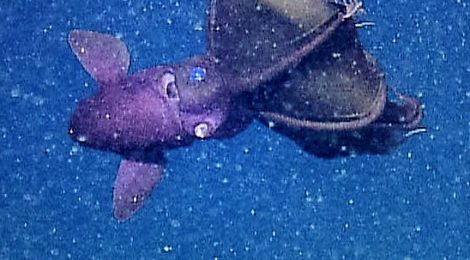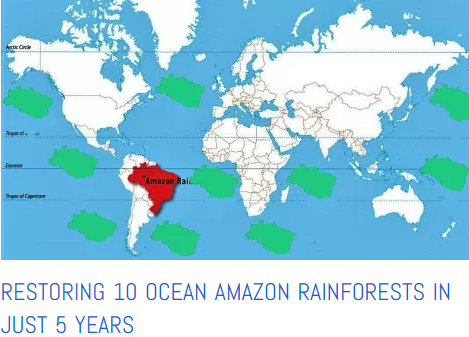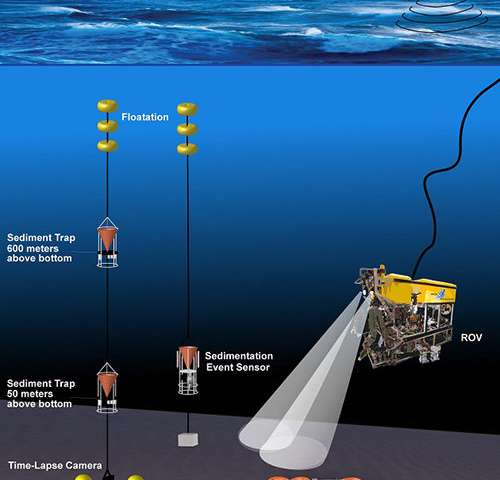
Ocean Carbon Sink Efficiency Doubles
Ocean pasture plankton blooms send carbon to sea bed in pulses
Old ocean carbon models and dogma shown in new PNAS Paper as wildly low and inaccurate
Once more the supreme potency of life in the blue part of this blue planet is proven key to global carbon cycles.
Restoring ocean pastures will immediately ‘bring back the fish’ and be the most potent and effective tools to save the world from climate change.
The ocean covers 72% of this planet and it is its incredible biological productivity that governs CO2 and its cycling for all the world. For decades it has been politically correct for we ‘earthlings’ to claim that the fraction of the 28% land of this planet must be at least equal in importance to the seas. That of the 28% of the earth is half covered by sterile rock and ice was glossed over. Of course, our ‘team’ mentality could justify that terrestrial plant life is equal to unknowable plant plankton life that lies beneath the surface of the oceans.
Countless reports cite that the potency of photosynthesis on earth is at least equal if not more than equal to photosynthesis in the blue part of this blue planet. Rainforests have been proclaimed the ‘lungs of the earth’ in spite of the fact that rainforests, and indeed all the forests of this planet, occupy a mere 7% of the globe. The more than ten times the area of ocean forests, or better said, ocean pastures, were conveniently ignored and/or trivialized. Indeed more than 90% of all life on this planet resides in the oceans, but hey who’s counting.
 In a new study published in the Proceedings of the National Academy of Sciences (PNAS), MBARI scientists and their collaborators show that ocean carbon doesn’t occur as an annual or even multi-annual process. Rather in keeping with the known behaviour of ocean plankton that ‘blooms’ sporadically repurposing of CO2 into oxygen and sinking of the carbon as ‘marine snow like the blizzard that surrounds the deep-sea squid in the photo lead of this story, by ocean pastures occurs as what they call ‘pulse events’.They show that, although such episodes are very important to the carbon cycle, they have been woefully mis-represented in global climate models.
In a new study published in the Proceedings of the National Academy of Sciences (PNAS), MBARI scientists and their collaborators show that ocean carbon doesn’t occur as an annual or even multi-annual process. Rather in keeping with the known behaviour of ocean plankton that ‘blooms’ sporadically repurposing of CO2 into oxygen and sinking of the carbon as ‘marine snow like the blizzard that surrounds the deep-sea squid in the photo lead of this story, by ocean pastures occurs as what they call ‘pulse events’.They show that, although such episodes are very important to the carbon cycle, they have been woefully mis-represented in global climate models.

Restoring the lost ten Amazon’s of living ocean will be a good start to saving this planet from the catastrophe of climate change. Click to read more…
Team Earth vs. Team Blue Planet
The tragedy of this common misrepresentation has been the failure to report on the collapsing ocean pastures. The oceans are a dynamic living system and thus this doubling of the marine snowfall is equivalent to doubling its carbon potency.
A ’cause celeb’ on Earth has been the clearing of 20% of the Amazon rainforest over the past century. The fact is that in each five-year period of time since 1959, since good ocean plankton pasture records have been kept, the real lungs of the planet, the ocean pastures have lost an equivalent to an entire Amazon rainforest. Count them up, that’s more than ten of our blue planets carbon dioxide consuming oxygen producing lungs gone, the vital ocean pastures have been eradicated.
In ocean pastures that bloom sporadically, it is only when blooming when they sink climate-changing carbon into the abyss. The carbon they scrub from the atmosphere, including the trillion tonnes of anthropogenic carbon already emitted in humanity’s fossil fuel age, is given the ‘deep six’ as it falls as ‘marine snow.’ Marine snow is made up of the dead and dying parts of the ocean pasture, think of it like the leaves that fall each autumn. The researchers show that this supply of carbon to the deep sea isn’t steady. At times, months’ to years’ worth of marine snow falls to the abyss during very short “pulse” events.

This illustration shows some of the research instruments used in studies at Station M. Credit: Shannon Boedecker © 2012 MBARI
MBARI Senior Scientist Ken Smith has studied how deep-sea communities respond to changing carbon supply for the last 29 years at a deep-sea research site called Station M. This long-term monitoring site is 4,000 meters (2.5 miles) below the ocean surface and 220 kilometers (124 miles) off California’s coast. This is the only deep-sea site in the world where continuous supply and demand of carbon are recorded in detail as a time series.
A suite of autonomous instruments at Station M helps researchers study the pulse events and their impacts on deep-sea biota. Two sets of sediment traps, suspended 50 and 600 meters above the seabed, collect the sinking marine snow every 10 days. On the bottom, time-lapse cameras take hourly photographs of the seafloor, which help scientists detect changes in amounts of marine snow and changes in animal communities.
Since 2011, MBARI’s Benthic Rover, an autonomous underwater vehicle the size of a small car, has crawled 11 kilometers (seven miles) across the seafloor at Station M. It measures oxygen consumption by microbes and animals on the bottom, allowing scientists to estimate how much food (carbon) is being consumed.
The PNAS study focused on six periods between 2011 and 2017 when large amounts of marine snow reached sediment traps at Station M. During these episodic pulse events, four times more carbon reached the deep sea each day, in comparison to non-pulse days.
The pulses of food (and carbon) to the deep sea are not currently taken into account in global climate models. The “Martin curve” formula, which is based on sea-surface conditions such as water temperature, is widely used to estimate how much carbon reaches the deep sea. Huffard and her coauthors found that the Martin curve matched their data well on non-pulse days, but it underestimated the amount of carbon arriving during pulse events by 80 percent.
“In total the Martin curve estimated only half the deep-sea carbon that we measured,” said Huffard.
These findings have implications for how the Martin curve and similar models are used to prepare global carbon budget estimates for the Intergovernmental Panel on Climate Change Assessment Reports. “We need to find a way to evolve such models so that they can capture these events, given their overall importance,” Huffard said.
As a next step, the research team will be looking to study individual pulse events more closely. Huffard pointed out that many questions remain unanswered.
“What makes each pulse different? Why are they so much more prevalent now than previously? What surface conditions lead to their formation?” she said. “If we understand that, we can possibly model pulses from satellite data, so our global models can more accurately predict global carbon budgets.”
“We would love to have 50 Station Ms all over the world, but we can’t,” Huffard added. “Realistically we need to model this using the global coverage provided by satellites.”
End of Everything?
Thus the constant refrain that oceans and lands have about equal roles in this blue planet’s carbon cycle is finally buried under the ever-present marine blizzard. By restoring ocean pastures and primary productivity we might take advantage of this marine falling carbon manna. As oceans create marine snow the CO2 in the atmosphere is directly reduced. This was clearly shown in the dramatic drawdown of atmospheric CO2 over my vast ocean pasture project area of some 30,000+ sq. km. as compared to the air mass outside the blooming pasture. The ocean did not exhale CO2 as it bloomed, it inhaled deeply.
As for other un-tested and un-proven climate change techno-dreams for profit, they may help to reduce emissions but such actions are primarily designed for shifting political power and creating the holiest of holies a ‘license to print money.’ They will prove to be too little too late. The cost of restoring ocean life so that it may heal itself from our fossil fuel/fool age assault is proven to not have a cost per tonne measured in tens or hundreds of dollars per tonne, it’s cost is measured in pennies per tonne or less!
As ocean life as we know it succumbs to our first already delivered lethal dose of CO2, life on the rest, on the fringes of this blue planet, life as we like it, will slowly follow. If we sustain the current economic argument above all else in this regard the short rise of arrogance of the Eukarya will end leaving only a trace of itself written in stone for the future.
More information: Kenneth L. Smith et al. Episodic organic carbon fluxes from surface ocean to abyssal depths during long-term monitoring in NE Pacific, Proceedings of the National Academy of Sciences (2018). DOI: 10.1073/pnas.1814559115








